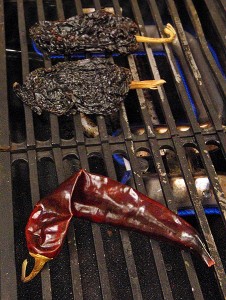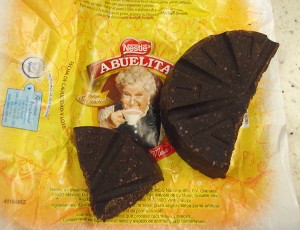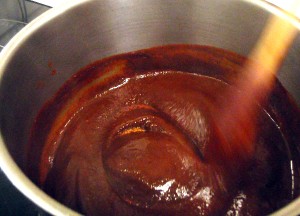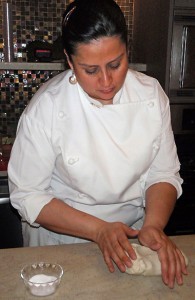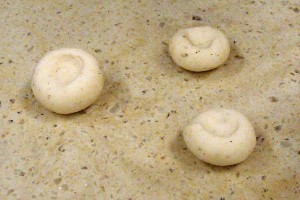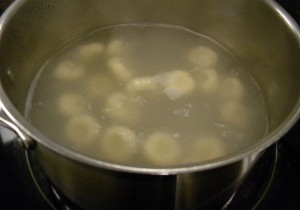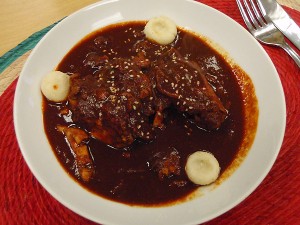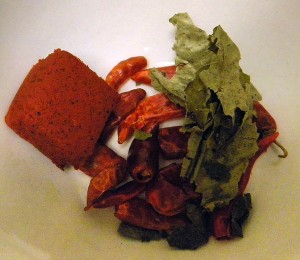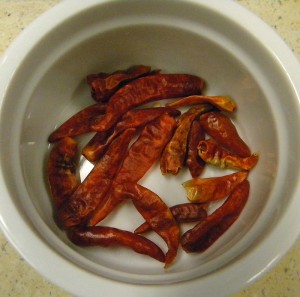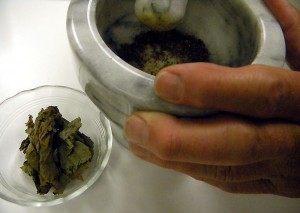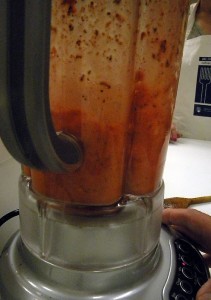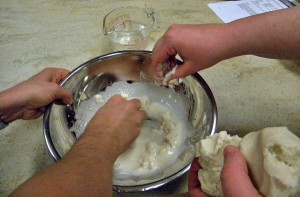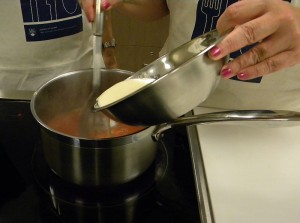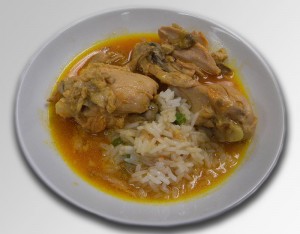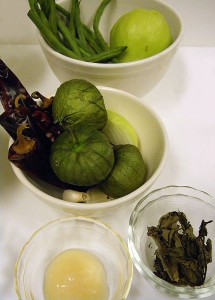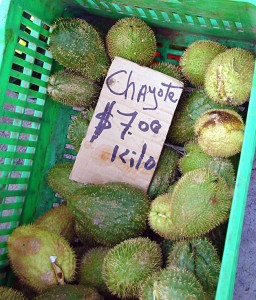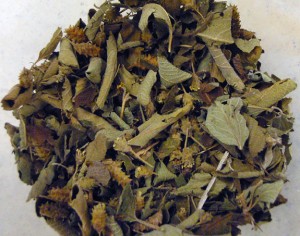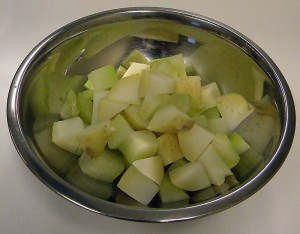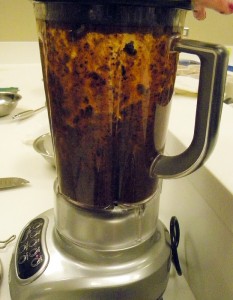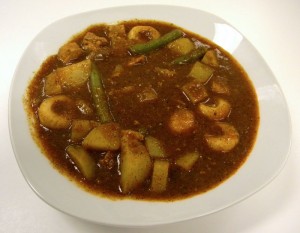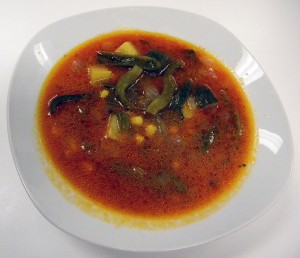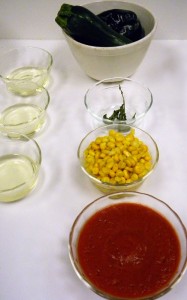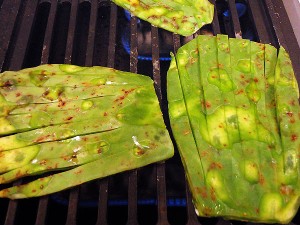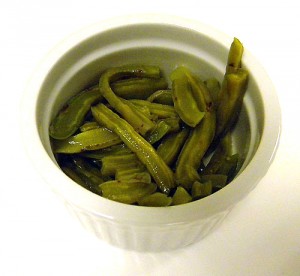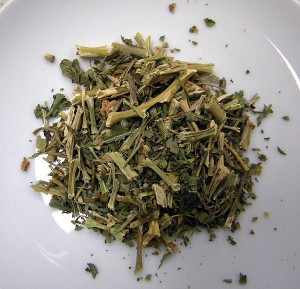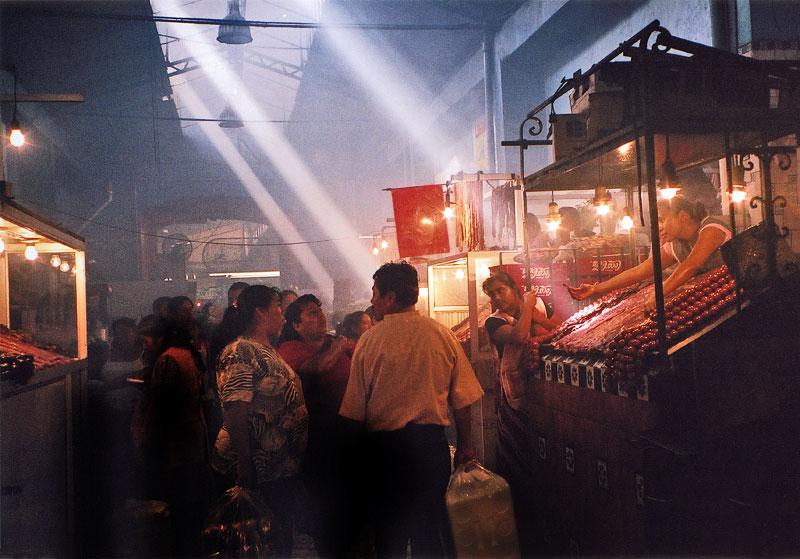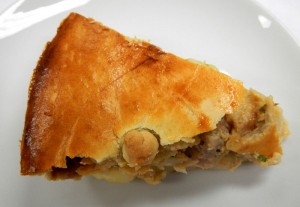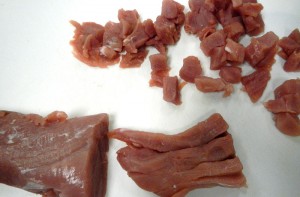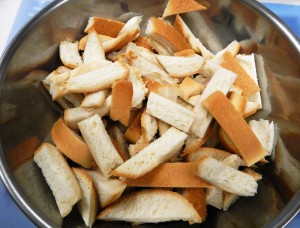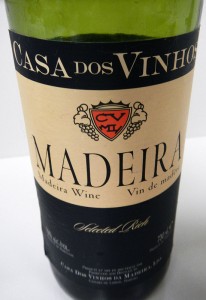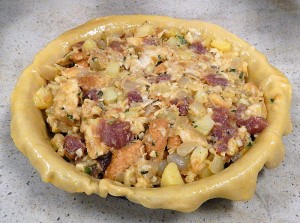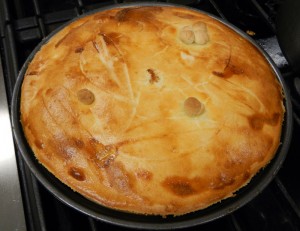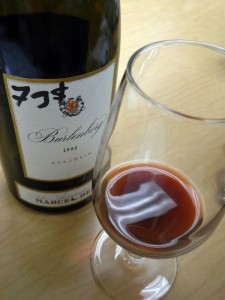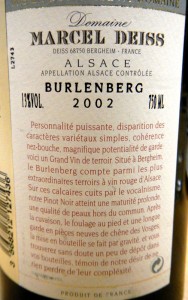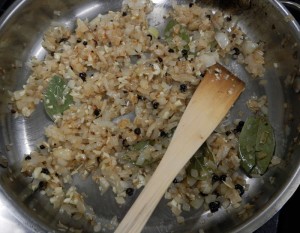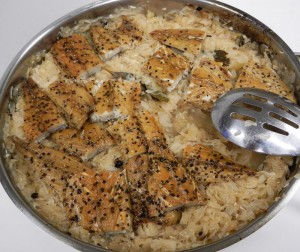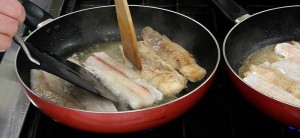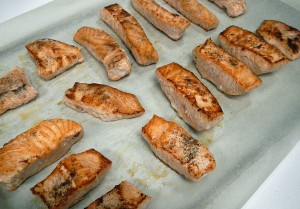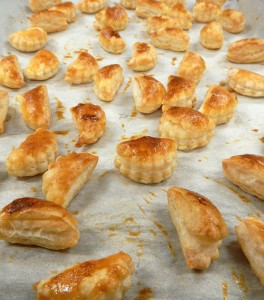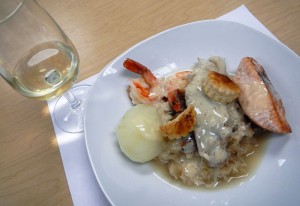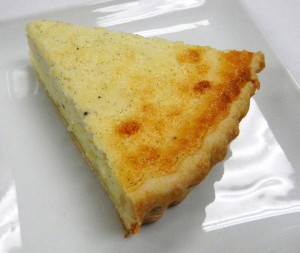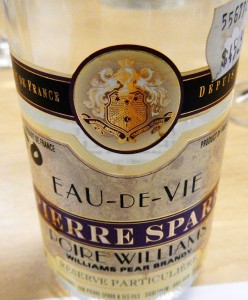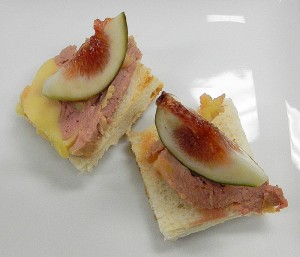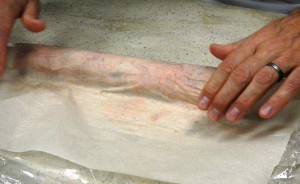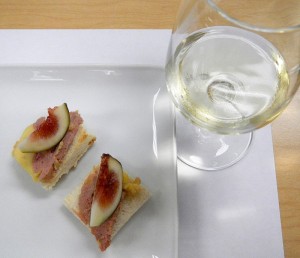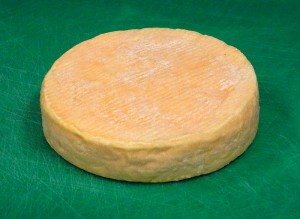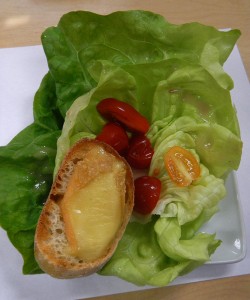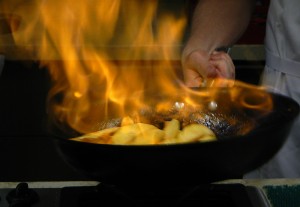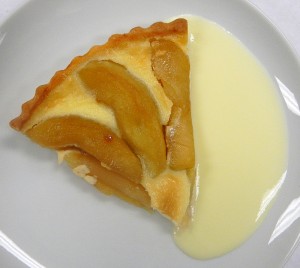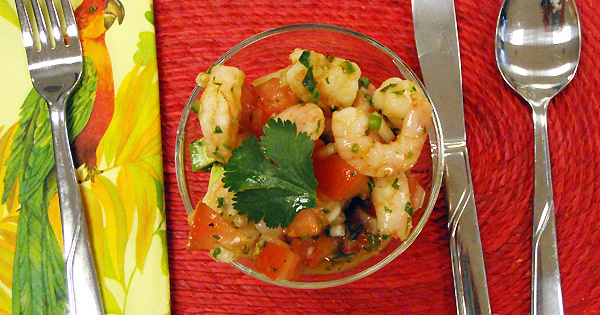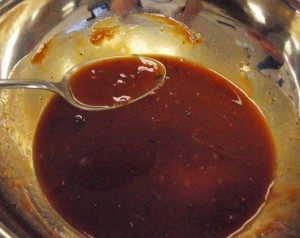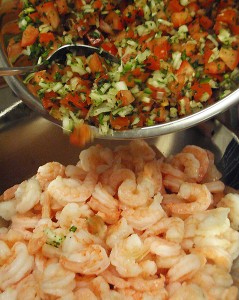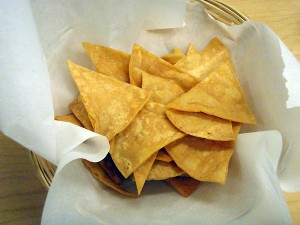These three cooking classes, featuring the food and wine of the Alsace region of France, were taken with UBC Continuing Studies. The Alsace region has moved back and forth between Germany and France over the centuries, and both the food and wine are heavily influenced by their German neighbours, as you can see by the sauerkraut soup that was the starter course for our second class.

sauerkraut & smoked sausage soup
‘Sauerkraut Soup with Smoked Sausage’
There were two meats in this soup, kielbasa sausage and diced boneless pork chops. Other ingredients included sauerkraut, onion, carrots, apple, apple cider, potato and herbs. The result was a hearty winter soup, perfect for the gloomy weather we were having.
The wine pairing for the Sauerkraut Soup was a ‘Gentil’ (which translates as ‘nice’) wine, a blend of Alsatian whites including 50% French Reisling (not as sweet as German Reisling) plus varying amounts of Pinot Gris, Gerwertztaminer, and Sylvaner. As it went rather ‘nicely’ with most of the dishes, I gave 3* out of four, and would buy it for its versatility.

Gentil “Hugel” Wine
Tarte Flambée or ‘Flammekueche’
The ‘Flambée’ referred to here is not an alcohol-drenched dish set aflame, but rather a type of wood-fired oven. The tart, called ‘Flammekueche’ in the Alsace, was described as an Alsatian pizza but to my mind was more like a quiche. There is a thin crust of dough topped with a variety of items depending on the type of ‘pizza’ one makes. Ours was unbelievably rich with ‘lardons’ (double-smoked bacon), thin slices of onion, button mushrooms, crème fraîche, Gruyere cheese, nutmeg and Dijon mustard.
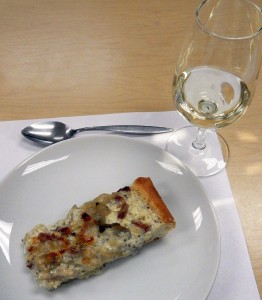
Tarte Flambée or ‘Flammekueche’
The wine chosen to compliment this dish was a Pinot Blanc. This one had notes of peach and tangerine with lots of flavour, and Chef Eric said that it goes well with anything rich (the crème fraîche and Gruyere cheese) and/or smoky (the ‘lardon’) and the Tarte Flambée qualified on both! I gave it 3* out of four, and would definitely buy it to complement this dish.
‘Baeckenofe with Sweet and Sour Cabbage’
The main course was an incredibly hearty stew made up of meat (pork shoulder), meat (beef chuck), meat (lamb shoulder), meat (ham hock) and more meat (kielbasa sausage). And a bottle of wine. Plus a few other minor ingredients such as onions, carrots, leeks, potatoes along with various herbs…
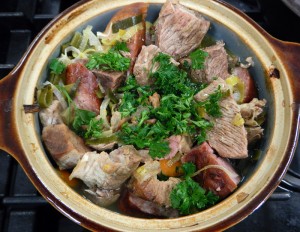
Baeckenofe, a meaty Alsatian stew
It was actually really good although if I was making it at home I might remove at least two, if not three, of the meats. The meats were marinated in wine and herbs overnight, then simmered until they fell apart. All the ingredients were layered in a buttered casserole dish and then baked for an hour or so. Served with French bread, cornichons (little pickles) and Dijon mustard on the side, this could have been a meal in itself. We had it accompanied with Sweet and Sour Cabbage.
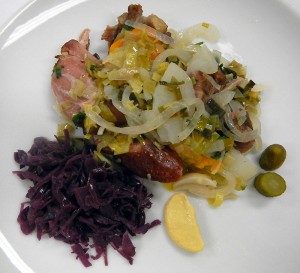
Baeckenofe with sweet and sour cabbage, Dijon mustard and cornichons
The wine chosen for this was a Pinot Gris. Of all the wines we imbibed that evening, this one was my fave, with an aroma of flowers and a taste of apricots, full and flavourful. Although $18 in Vancouver, apparently it is available for only a few euros in France, one great reason to visit France!

Pfaffenheims Pinot Gris, my four star wine of the evening!

